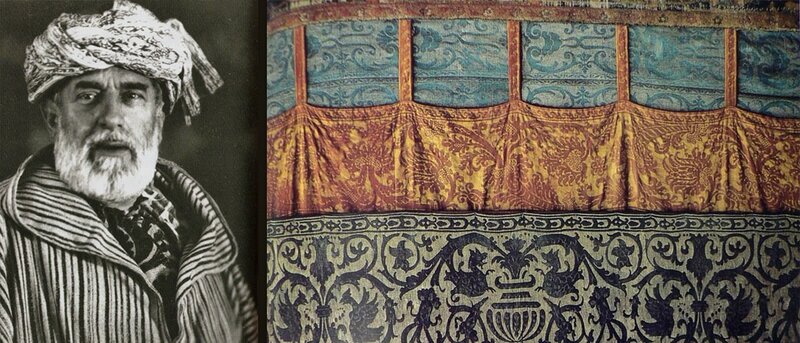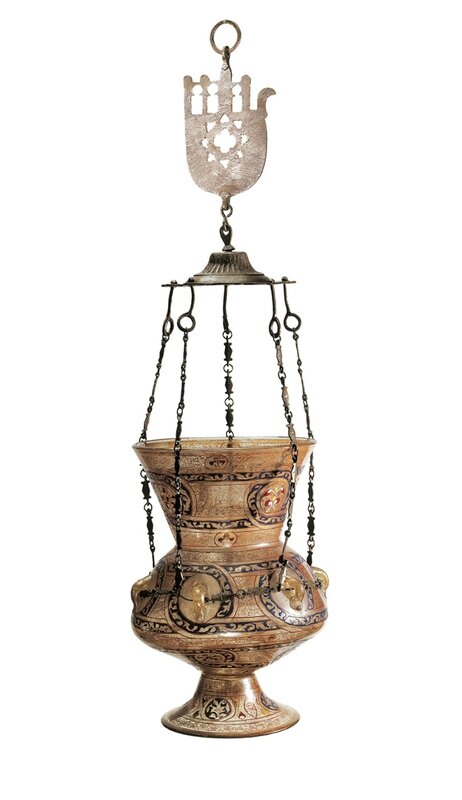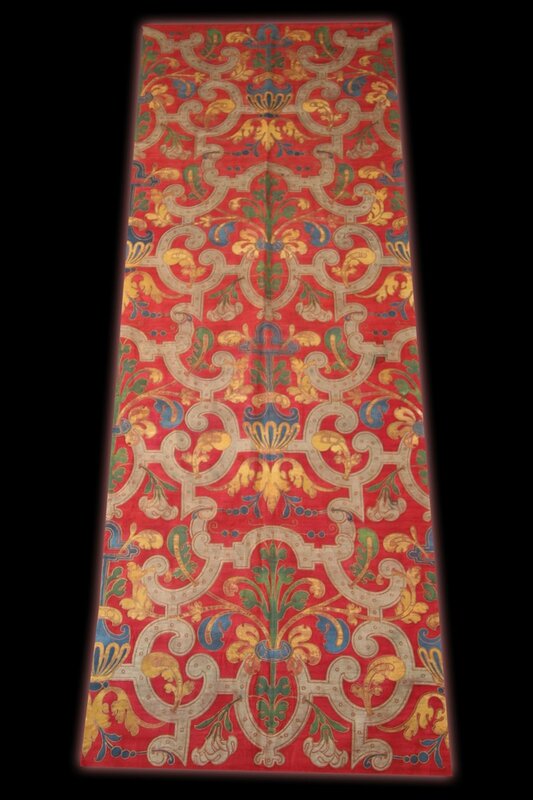![1]()
Affiche de l'exposition
ANGERS - Après les expositions « Sacres royaux, de Louis XIII à Charles X » au palais du Tau à Reims, « Le salon de George Sand »à Nohant, en 2014, et « De Versailles à la Motte Tilly, l’abbé Terray, ministre de Louis XV » au château de la Motte-Tilly en 2015, le quatrième volet du partenariat entre le château de Versailles et le Centre des monuments nationaux (CMN) se tiendra au château d’Angers du 15 octobre 2016 au 15 janvier 2017 grâce au prêt exceptionnel d’une quarantaine d’œuvres des collections du château de Versailles.
Cette nouvelle exposition intitulée « Le goût de la parure. Portraits du château de Versailles » est consacrée aux bijoux dans la peinture du XVIIe au XIXe siècle et se tiendra dans le logis royal du château d’Angers, résidence des ducs d’Anjou.
![2 bis]()
Anonyme. XVIIe siècle, Henriette-Anne d'Angleterre, duchesse d'Orléans, dite Madame. © RMN-GP (Château de Versailles), JG Berizzi
L’exposition
Du règne de Louis XIV au Second Empire, vingt-huit tableaux, huit gravures et une gouache permettent d’évoquer la typologie des parures : colliers, bagues, pendants d’oreilles, mais aussi boucles de souliers ou de ceintures, médaillons ornés de brillants et de pierres, ou encore pierres cousues sur des costumes. Leurs différentes fonctions - cadeaux diplomatiques entre la France et les cours européennes ou leurs ambassadeurs, présents pour les étrennes des membres de la famille royale ou encore cadeaux de mariage – sont ainsi mises en évidence.
L’exposition est également l’occasion de plonger dans l’histoire des joyaux de la Couronne. Les portraits des rois et reines sont, en effet, une précieuse source iconographique concernant ce trésor, enrichi par chaque souverain français, et qui a partiellement traversé les péripéties de l’Histoire. Si de nombreuses parures et pierres le composant ont disparu, les œuvres du château de Versailles les font aujourd’hui revivre dans le cadre prestigieux du logis royal au château d’Angers.
Enfin, admirer la parure dans le portrait revient à s’interroger sur l’image que le modèle a voulu donner de lui-même, alors qu’il se présente dans ses plus beaux atours. À cette analyse s’ajoute une dimension artistique : la parure est l’occasion pour le peintre de montrer son talent et sa virtuosité pour rendre l’éclat des pierreries, perles et diamants.
La scénographie de l’exposition s’articule de façon chronologique en plusieurs sections réparties successivement dans les différents espaces du logis royal du château d’Angers : le XVIIe siècle, le XVIIIe siècle et le XIXe siècle, permettant de mieux saisir l’évolution des usages et des formes des bijoux soumis, comme le costume, à la mode et au goût du temps.. Un film présente un diaporama d’autres œuvres versaillaises.
Première section : Le Grand Siècle
![2]()
Claude Lefèvre (1632-1675) et atelier, Louis XIV, roi de France (1638-1715). Vers 1660. Huile sur toile © Château de Versailles (dist. RMN-GP) / C. Fouin
Représenté grandeur nature, le roi est assis sur un siège à pattes de lion. Sur la table recouverte d’un drapé fleurdelysé sont posés le casque au panache rouge et la couronne royale tandis qu’un grand rideau s’ouvre sur un navire, au loin, allusion aux victoires sur mer. Insignes du pouvoir, l’épée, l’ordre du Saint-Esprit et la couronne sont ornés de diamants. Roi coquet et habile danseur, Louis XIV aime souligner le galbe de ses jambes par des jarretières à boucles, ornées de pierreries et de perles ainsi que d’élégantes chaussures à noeuds et à boucles de diamants.
![3 bis]()
Joseph Werner, Marie-Thérèse en costume à la polonaise, 1663-1664. Gouache sur vélin © Château de Versailles (dist. RMN-Grand Palais) / Christophe Fouin
L’épouse de Louis XIV est représentée en costume à la polonaise, costume de théâtre ou de carnaval comme l’indique le masque qu’elle tient à la main. La robe d’une somptueuse étoffe rouge, or et bleuté, est entièrement brodée ; un imposant rang de pierreries descend le long de la jupe. Le devant de corsage est tout entier composé de diamants, tandis que le décolleté est souligné d’un rang de perles et de diamants, agrémentés d’autres diamants en pendeloques. La coiffure est composée d’un casque d’étoffe polychrome orné de diamants et surmonté de plumes rouges, blanches et noires auxquelles se mêle une aigrette de perles. Cette miniature illustre la richesse de certains costumes d’apparat réalisés pour la famille royale.
![10]()
Attribuéà François de Troy, Louise-Bénédicte de Bourbon, princesse de Condé (1676-1753), huile sur toile© Château de Versailles (dist. RMN-Grand Palais) / Christophe Fouin
Représentée sous les traits de Cléopâtre, la princesse de Condé brandit la perle qu’elle s’apprête à plonger dans une coupe remplie de vinaigre « dont la violente acidité dissout les perles » montrant ainsi son peu d’attachement aux richesses de ce monde. Pourtant, la princesse apprécie le faste. Au château de Sceaux, elle organise des fêtes somptueuses et réunit un cercle littéraire. Vers 1690, période à laquelle on peut situer ce portrait, la parure se fait plus légère : un diadème en or, enrichi au centre d’un rubis, d’où découlent deux guirlandes de perles et quelques diamants.
![4]()
Antoine Trouvain (1652-1708), Françoise d’Aubigné, marquise de Maintenon (1635-1719). Gravure à l’eau forte© Château de Versailles (dist. RMN-Grand Palais) / C. Fouin
Madame de Maintenon est représentée en élégante dévote, tenant à la main un livre de prières richement relié, à ses pieds une aumônière. La sobriété toute relative de sa tenue, noir et blanc, est démentie par le luxe des étoffes, de l’hermine, et des pierreries fixées par des agrafes sur la jupe, les manches et les épingles dans la coiffure à la Fontange.
Deuxième section : Le Siècle des Lumières
![11]()
Augustin-Oudart Justinat ( ?-1743), Louis XV, roi de France et de Navarre (1710-1774), 1717. Huile sur toile @ Château de Versailles (dist RMN-GP) / C. Fouin
La mise du jeune roi frappe par sa somptuosité. Il appuie le sceptre fleurdelysé sur un meuble qui porte la couronne fermée ornée de perles et de diamants. La garniture de l’habit provient des joyaux de la Couronne ; des pierres précieuses et semi-précieuses – saphirs, diamants, grenats – brillent au revers des manches, de la boutonnière et sur le rabat des poches ; elles parsèment la riche étoffe bleu pâle à brocart blanc rebrodée de fils d’or. Une broche de diamants orne le tricorne, bordé de plumes. Paré du ruban bleu de l’ordre du Saint-Esprit, Louis XV porte aussi le noeud rouge et la croix de diamants des chevaliers de Saint-Louis.
![12]()
Sébastien Antoine (1687- v.1761), Représentation dans sa vraie grandeur de la couronne de pierreries qui a servi au sacre de Louis XV ce 25 octobre 1722. Gravure à l’eau forte et au burin © Château de Versailles
Outre une couronne d’or, Louis XV porte le jour de son sacre une couronne de vermeil, plus légère. La monture ajourée, composée d’un bandeau et de huit arceaux, était ornée d’un décor polychrome, caractéristique du goût de l’époque, de diamants blancs et roses, rubis, émeraudes, saphirs et topaze. Plusieurs diamants célèbres y étaient sertis, en particulier, cinq des Mazarins, légués par le cardinal à Louis XIV, dont le « Sancy », qui ornait le sommet de la couronne, formant le centre de la fleur de lys, et surtout le « Régent ». Avec ses 282 diamants, ses 64 pierres de couleur et ses 200 perles, c’est la plus riche couronne jamais réalisée.
![louvre-couronne-louis]()
Augustin Duflos, joaillier, Couronne de Louis XV, 1722, Paris. Argent doré, pierres et perles d'imitation. H. : 24 cm. ; D. : 22 cm. © 2010 Musée du Louvre / Martine Beck-Coppola
![13]()
Alexis Simon Belle (1674-1734), Marie Leszczynska (1703-1765) et le dauphin Louis (1729-1765), Vers 1729. Huile sur toile © Château de Versailles
Le dauphin porte sur sa robe de drap d’argent le ruban bleu céleste de l’ordre du Saint-Esprit, retenu à l’épaule par une barrette fleurdelysée en or et sertie de diamants ; la croix est d’or et d’émaux verts ou blancs ; la plaque est brodée sur l’habit. Ce portrait d’apparat témoigne du goût prononcé de la reine pour les diamants. Ils constellent la magnifique parure de grand corps de la souveraine, brillent aux épingles et au médaillon cerclé de perles, retenant les manches bouffantes. Une aigrette sertie de brillants rehausse sa coiffure tandis qu’une chute de perles court dans ses cheveux.
![14]()
D’après Paul Bassenge et Charles-Auguste Boehmer, Représentation exacte du grand collier en brillants des sieurs Boehmer et Bassenge, Ap. 1785. Gravure à l’eau forte © Château de Versailles (dist. RMN-GP) / C. Fouin
La passion de Marie-Antoinette pour les bijoux est connue. Pourtant, le fameux collier de la reine, auquel son nom est attaché, ne lui a jamais appartenu. Les joailliers Charles-Auguste Boehmer et Paul Bassenge réalisèrent un exceptionnel collier, composé de 550 diamants et d’une centaine de perles, et tentèrent de convaincre la reine de l’acquérir. Celle-ci refusa en raison de son prix exorbitant. Le complot de la comtesse de Valois pour faire acheter la parure au cardinal de Rohan, l’entrevue de celui-ci avec un sosie de la reine dans un bosquet du château de Versailles, son arrestation à l’issue de la messe du 15 août 1785, et la dispersion des pierres du collier démembré donnèrent des airs de roman à cet épisode, qui eut des conséquences politiques réelles puisque la réputation de la reine s’en trouva profondément ternie. Cette gravure réalisée peu après le scandale permet de se représenter le collier disparu : il était composé d’un ras-du-cou enrichi de plusieurs pendants, et d’un second collier, porté sur le décolleté et les épaules, à deux rangs de diamants séparés par un rang de perles, terminés par quatre glands de diamants et perles inspirés des modèles de passementerie.
![00523]()
Collier de la Reine (reproduction en zircon), Cabinet des trésors, Château de Breteuil Marie Antoinette © DR
Troisième section : Le siècle des monarchies
![7]()
Joseph Franque, Marie-Louise, impératrice des Français et le roi de Rome, huile sur toile © Château de Versailles (dist. RMN-Grand Palais) / Christophe Fouin
La jeune impératrice semble avoir interrompu ses devoirs d’État pour venir contempler son enfant endormi. Elle est en grand habit de Cour, robe de soie brodée et manteau de velours cramoisi doublé d’hermine, et porte une riche parure, comprenant un diadème et un peigne, un collier, un ornement de ceinture, des pendants d’oreilles et des bracelets. Elle serre sur son coeur un portrait en médaillon de l’Empereur, serti de diamants. À côté de l’enfant, sur un coussin, est posée une couronne impériale.
![8]()
Robert Lefèvre, Pauline Bonaparte-Borghèse, duchesse de Guastalla (1780-1825), 1806. Huile sur toile © Château de Versailles (dist. RMN-Grand Palais) / Christophe Fouin
Pauline Borghèse, la plus coquette des soeurs de Napoléon, symbolise au début de l’Empire le renouveau de la parure. Elle porte ici une coiffure digne de celle des dames romaines, combinant un bandeau, serti de pierres de couleurs et de brillants, et des bandeaux d’étoffe passant sous le menton. Une paire de broches ornées d’un camée serti d’or retient sur les épaules l’attache des manches. La robe est retenue sous les seins par une ceinture tressée de fils d’or.
![9]()
Jean-Baptiste-Paulin Guérin (1783-1855), Marie-Caroline, duchesse de Berry (1783-1855). Huile sur toile © Château de Versailles (dist. RMN-Grand Palais) / C.Fouin
La duchesse de Berry, véritable « fashion victim », est passionnée de fêtes en costumes et de bijoux d'inspiration historique ou folklorique.
Il semble qu’elle soit ici représentée dans une tenue de bal, vêtue d’une robe de taffetas ou de soie or, avec de larges manches bouffantes de mousseline, agrémentée d’un important ornement de corsage, mêlant des rangs de perles et des pierres de couleurs entourées de brillants, le tout cousu directement sur la robe. Coiffée en rubans et rouleaux, la jeune femme porte également sur le front une ferronnière, faite d’un diamant et d’une chaîne en or, ainsi que des pendants d’oreilles, formés d’un brillant et d’une perle en forme de goutte d’eau.
![15]()
Edouard Dubufe (1819-1883), Eugénie de Montijo de Guzman, impératrice des Français (1826-1920), 1854. Huile sur toile © Château de Versailles (dist. RMN-GP) / C. Fouin
L’impératrice est figurée ici dans un cadre officiel dans une robe de bal de soie blanche rehaussée de rubans et de fil d’or. Elle porte peu de bijoux : un collier d’un rang de belles perles et un bracelet à quatre rangs de perles et serti d’un gros saphir entouré de brillants. Sa coiffure et son corsage sont ornés de bouquets de roses naturelles, dans l’esprit naturaliste alors en vogue, qui renouait avec celui de la fin de l’Ancien Régime, cher à Marie-Antoinette, qui fut son modèle.
Logis royal du château d’Angers, du 15 octobre 2016 au 15 janvier 2017












































































































